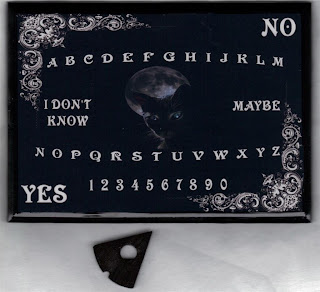Long Spined Hedgehog
Huntington Library, HM 27523, Folio 228r
Hedgehogs are cute little creatures. As a pet sitter, I once cared for a hedgehog named Spike, a polite gentleman who lived in a deluxe cage and ate dog food from a tiny bowl. Spike got me wondering about the mythological history of the whimsical beasties, and their possible (guaranteed) misadventures with the human species.
Ancient Egypt
It started off well enough. The ancient Egyptians venerated the hedgehog as a symbol of rebirth. Its autumnal hibernation and spring awakening made it a natural for such idealisation. Their prickly skins also made them a popular symbol for protection against predators, both real and spiritual.
Hedgehog Rattle
Middle Kingdom 1938-1700 B.C.E.
The hedgehog on a stick in the picture above is a rattle from the Middle Kingdom of Ancient Egypt. Such rattles were thought to chase away nefarious threats such as stinging scorpions, poisonous snakes, and nasty spirits bent on the wholesale corruption of humanity. I think the rattle is adorable, and I'd be delighted to use one to help me get through my day.
Ancient Egyptian Hedgehog Amulet
Twelfth Dynasty 1981-1802 B.C.E.
I found this amulet photograph on the
Metropolitan Museum of Art website. Since the Ancient Egyptians viewed hedgehogs as a symbol of rebirth and protection, perhaps this amulet was worn by the departed to guard them through the difficult afterlife journey.
Model Boat
Journeys of the living were often made by boat. Small hedgehog statues sometimes graced the bows of Egyptian vessels for protection against dangerous water and other calamities. Strangely, the hedgehog statues faced backwards instead of forwards as might be supposed. It's unknown why this was so.
Unfortunately, it wasn't all joy for the hedgehogs of Ancient Egypt.
Sad!
According to
Wikipedia, hedgehogs were eaten in Ancient Egypt. Be careful of the spines!
Great old clock.
Romanian Creation Myth
I hope you forgive my sudden leap in time and culture, as I will now write about the hedgehog in Romanian creation myth.
The early Romanians, considering hedgehogs beings of massive wisdom, were obviously a people of taste and discernment. They had a creation myth featuring an eccentric hedgehog, a bee, and that big guy himself named God.
How Hedgehog Saved Earth and All the Fish
The story goes that God, in his enthusiasm for creating earth, found he had no room for water. Knowing the hedgehog was the wisest of all creatures, God sent the bee to ask hedgehog what to do regarding this most difficult of dilemmas. Finding hedgehog ambling about, the bee said, "Oh, wise and worthy hedgehog. The earth is in a pathetic state and God is baffled. He made so much earth, there is hardly any water. What will the fish do?" Being a humble creature, the hedgehog refused saying, "Go away! God knows everything and please stop bothering me." Since the bee was not so stupid either, he recalled hedgehog often talked to himself and sagely waited a few moments in the bushes for wise mumbling. Sure enough, it wasn't long before hedgehog said, "God needs to pick-up earth's skirts and create mountains and valleys." The bee flew back to God and this was how hedgehog saved planet Earth and all the fish.
Much water!
Pliny the Elder
So know we know what the Romanians believed, but
what did our dear good friend Pliny the Elder make of the hedgehog. He wrote in his
Historia Naturalis:
Hedgehogs also lay up food for the winter; rolling themselves on apples as they lie on the ground, they pierce one with their quills, and then take up another in the mouth, and so carry them into the hollow of trees.
Mercy!
Hedgehogs Gathering Apples
Bodeian Libary, MS. Douse 151, Folio 30r
Pliny the Elder
He looks a little peeved in this picture. I hope he's not mad at me!
Hedgehogs as Medicine
Lurching some more through history, we learn hedgehogs were valued for their medicinal purposes. Many years ago, in Europe and other places, it was believed hedgehogs could cure a whole host of illnesses befalling humanity. They were guaranteed to end leprosy, colic, boils, stones and wonky vision. I'm not sure about pimples and bad breath. If you had a health eruption anywhere on your body, plaster a little hedgehog on it and call the doctor in the morning.
...the flesh of the hedgehog is wholesome for the stomach and strengthens the same. Likewise it hath a power of drying and relieving the stomach. It deals with the water of dropsy and is of great help to such as are inclined to the sickness called
elephantiasis.
I wish I hath a picture of Konrad, but I don't. I apologise for the link to elephantiasis. It's not for the faint for heart.
The Hedgehog in Elizabethan Britain
Good Queen Bess answered English farmers' pleas when they complained hedgehogs were stealing milk from cows late at night. In 1566, parliament put a 3 pence bounty on every hedgehog captured and put to death. Needless to say, thousands upon thousands were killed. The irony of all this is that hedgehogs are lactose intolerent. Poor hedgehogs.
Here's Bess again. I used this picture in my last post. She sure had a lot of troubles.
Before rocketing away from Elizabethan England, I must quote Shakespeare, that minor writer who didn't think much of the hedgehog either. He wrote in Midsummer Night's Dream:
You spotted snakes with double tongue,
Thorny hedgehogs, not be seen;
Newt and blindworms, do no wrong;
Come not near our Fairy Queen.
The original Groundhog was a Hedgehog!
Americans all know about Groundhog Day. We wait for Punxsutawney Phil to hand down the verdict on spring's arrival. I bet many Americans don't know the first spring predicting beastie was a hedgehog. The ancient Romans swore by them. Don't tell Phil!
I'll end this post with a couple of nice links about the sweet hedgehog.
Mrs. Tiggly Winkle
by Beatrix Potter
The Hedgehog Manor































.png)













